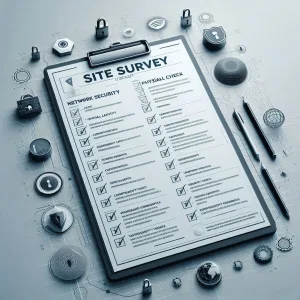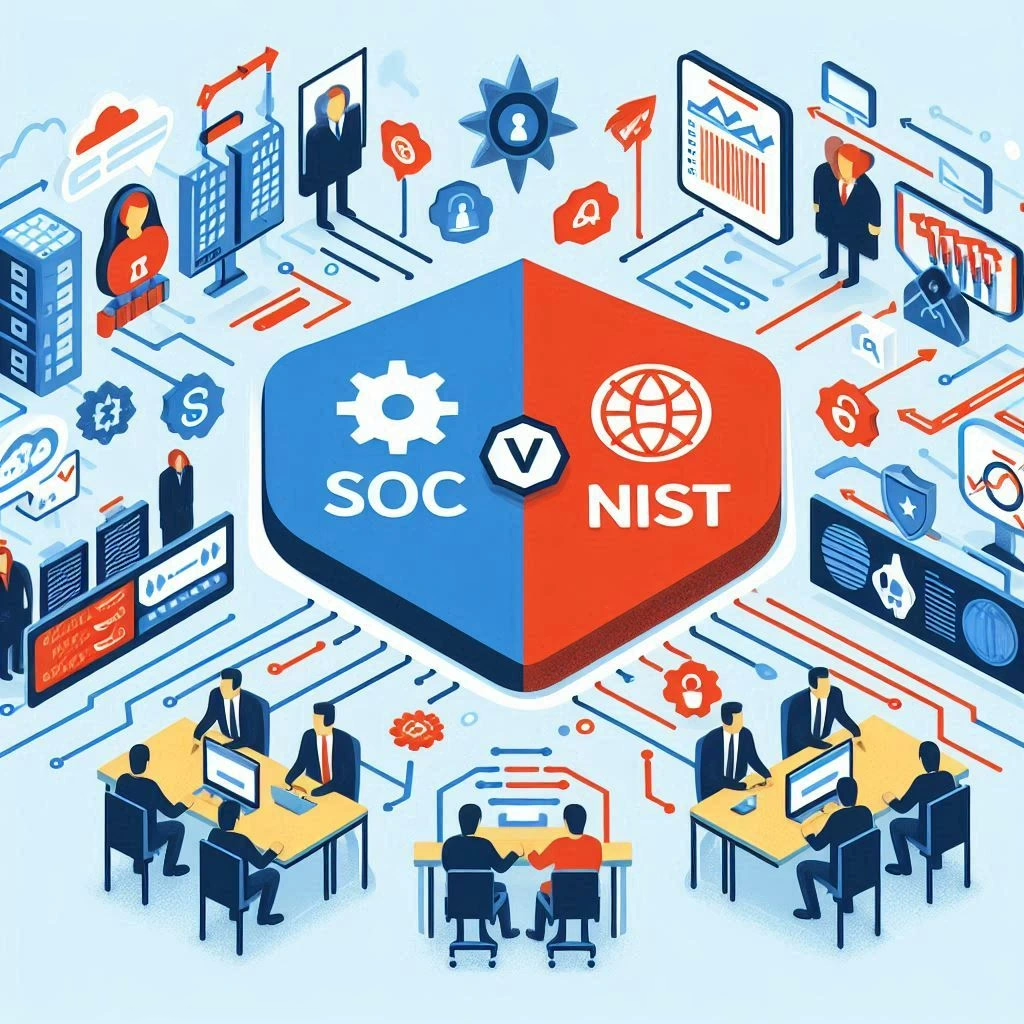Understanding the role of a contract compliance auditor is crucial for ensuring that all agreements and regulations are consistently met. More precisely, contract compliance auditing is a critical process within the internal audit framework that focuses on ensuring that all parties involved in a contract adhere to the agreed-upon terms and conditions. This systematic review not only verifies compliance but also assesses various aspects such as financial records, operational processes, and performance metrics to ensure that contractual obligations are met effectively [3].
Importance of Ensuring Adherence to Contractual Agreements
The significance of contract compliance auditing cannot be overstated. It serves multiple purposes, including:
- Financial Recovery: One of the primary benefits is the potential recovery of funds that may be owed due to discrepancies or errors in payments. By identifying and rectifying these issues, organizations can improve their cash flow and overall financial health [4].
- Enhanced Relationships: Regular audits foster trust and strengthen relationships between contracting parties. By ensuring compliance, organizations can demonstrate their commitment to upholding the terms of the agreement, which can lead to more collaborative partnerships [13].
- Regulatory Compliance: Contract compliance auditing also plays a vital role in ensuring that businesses adhere to applicable laws and regulations. This is particularly important in industries that are heavily regulated, where non-compliance can lead to significant penalties and reputational damage.
Overview of Risks Associated with Non-Compliance
Failing to adhere to contractual agreements can expose organizations to various risks, including:
- Financial Risks: Non-compliance can result in financial losses due to penalties, legal fees, and the potential for lost business opportunities. Identifying areas of non-compliance through regular audits can mitigate these risks and protect the organization’s bottom line [11].
- Operational Risks: Non-compliance may lead to disruptions in operations, affecting service delivery and overall business performance. This can result in customer dissatisfaction and damage to the organization’s reputation.
- Legal Risks: Breaches of contract can lead to legal disputes, which can be costly and time-consuming. A thorough compliance audit can help identify potential legal issues before they escalate, allowing organizations to address them proactively [9].
Contract compliance auditing is an essential component of internal auditing that not only safeguards an organization’s financial interests but also enhances relationships and ensures regulatory adherence. By leveraging innovative tools and techniques, auditors can enhance their efficiency and effectiveness in this critical area.
The Role of Technology in Auditing
In the realm of internal auditing, particularly in contract compliance auditing, the integration of technology has become a pivotal factor in enhancing efficiency and effectiveness. This section explores how innovative tools and techniques are reshaping the auditing landscape, making it essential for IT auditors and compliance professionals to adapt to these changes.
Overview of Traditional Auditing Methods
Traditionally, auditing methods relied heavily on manual processes, which included extensive documentation reviews, physical inspections, and face-to-face interviews. Auditors would often spend significant time sifting through paper records and spreadsheets to gather necessary information. This approach, while effective in its time, was often time-consuming and prone to human error. The reliance on manual data entry and analysis limited the ability to quickly identify discrepancies or compliance issues, leading to potential oversights in contract adherence and regulatory requirements.
Challenges Faced by Auditors Without Technology
Without the support of modern technology, auditors encounter several challenges:
- Inefficiency: Manual processes can lead to delays in audit completion, as auditors must allocate substantial time to data collection and analysis.
- Increased Risk of Errors: Human error is a significant risk in traditional auditing methods, where data entry mistakes can result in inaccurate findings and conclusions.
- Limited Data Analysis: The inability to analyze large volumes of data quickly restricts auditors from identifying patterns or anomalies that could indicate compliance issues or fraud.
- Difficulty in Collaboration: Traditional methods often hinder effective communication and collaboration among audit teams, especially when dealing with remote or distributed teams.
Introduction to the Concept of Digital Transformation in Auditing
The advent of digital transformation has revolutionized the auditing landscape, introducing a suite of advanced tools and technologies that enhance the auditing process. This transformation encompasses the integration of data analytics, artificial intelligence (AI), and robotic process automation (RPA) into auditing practices. These technologies enable auditors to:
- Automate Routine Tasks: AI-powered tools can handle repetitive tasks such as document reviews and data entry, allowing auditors to focus on more strategic aspects of the audit process [10].
- Enhance Data Analysis: Advanced data analytics tools provide auditors with real-time insights into financial performance, enabling them to detect irregularities and patterns that may go unnoticed in traditional audits [1][13].
- Improve Compliance Monitoring: Technology facilitates effective monitoring of contract compliance, ensuring that organizations adhere to applicable laws and regulations [14].
- Foster Collaboration: Digital platforms enhance communication and collaboration among audit teams, making it easier to share information and insights across different locations [8].
The integration of technology in contract compliance auditing is not just a trend but a necessity in today’s fast-paced business environment. By leveraging innovative tools and techniques, auditors can significantly improve their efficiency, accuracy, and overall effectiveness in ensuring compliance and mitigating risks. Embracing this digital transformation is essential for IT auditors and compliance professionals aiming to stay ahead in the evolving landscape of internal auditing.
Innovative Tools for Contract Compliance Auditors
In the realm of internal auditing, particularly in contract compliance, leveraging technology has become essential for enhancing efficiency and effectiveness. As IT auditors and compliance professionals seek to streamline their processes, several innovative tools have emerged that significantly improve the auditing landscape. Below are key technological tools that can transform contract compliance auditing:
- Contract Management Software: This tool is designed to streamline the management of contracts, ensuring that compliance monitoring is both efficient and effective. By automating contract tracking and management, auditors can easily access contract details, deadlines, and compliance requirements, reducing the administrative burden and minimizing the risk of oversight.
- Data Analytics Tools: These tools empower auditors to analyze large volumes of data swiftly, enabling them to identify compliance trends and anomalies. By utilizing advanced analytics, auditors can gain insights into contract performance and compliance issues, allowing for proactive measures to be taken before problems escalate.
- Artificial Intelligence (AI) and Machine Learning (ML): AI and ML technologies facilitate predictive analysis and risk identification within contracts. By analyzing historical data and patterns, these tools can help auditors anticipate potential compliance risks, enabling them to focus their efforts on high-risk areas and improve overall audit outcomes.
- Blockchain Technology: This innovative technology enhances transparency and traceability in contract execution. By utilizing blockchain, auditors can verify contract terms and conditions in real-time, ensuring that all parties adhere to their obligations. This level of transparency not only builds trust among stakeholders but also simplifies the auditing process.
- Collaboration Tools: Effective communication and document sharing are crucial for audit teams, especially when dealing with complex contracts. Collaboration tools enhance teamwork by providing platforms for real-time communication, document sharing, and project management. This ensures that all team members are aligned and can contribute effectively to the auditing process.
By integrating these innovative tools into their auditing practices, contract compliance auditors can significantly enhance their efficiency, reduce errors, and improve compliance outcomes. Embracing technology not only streamlines processes but also positions auditors to better navigate the complexities of modern contract management.
Techniques for Effective Contract Compliance Auditing
In the realm of internal auditing, particularly in contract compliance, leveraging technology has become essential for enhancing efficiency and effectiveness. Here are some innovative methodologies that IT auditors and compliance professionals can apply to improve outcomes in contract compliance audits:
- Automated Risk Assessments: Utilizing technology to conduct automated risk assessments allows auditors to quickly identify high-risk contracts. By analyzing historical data and contract terms, automated systems can flag contracts that may pose compliance risks, enabling auditors to prioritize their focus on these areas. This proactive approach not only saves time but also enhances the overall risk management process [3][10].
- Digital Checklists and Workflows: Implementing digital checklists and workflows streamlines the auditing process. These tools help ensure that all necessary steps are followed and documented, reducing the likelihood of oversight. By digitizing checklists, auditors can easily update and share them with relevant stakeholders, fostering collaboration and improving communication throughout the audit process [5][8].
- Utilizing Dashboards for Real-Time Compliance Monitoring: Dashboards provide a visual representation of compliance metrics and audit findings, allowing auditors to monitor compliance in real-time. This capability enables quick identification of issues and facilitates timely decision-making. By integrating data from various sources, dashboards can present a comprehensive view of contract compliance status, making it easier for auditors to track progress and address potential problems as they arise [12].
- Integrating Audit Tools with Existing Enterprise Systems: Seamless integration of audit tools with existing enterprise systems enhances data flow and accessibility. This integration allows auditors to pull relevant data directly from enterprise resource planning (ERP) systems or contract management software, reducing manual data entry and the risk of errors. By having all necessary information at their fingertips, auditors can conduct more thorough and efficient audits [6][10].
By adopting these innovative tools and techniques, contract compliance auditors can significantly enhance their auditing efficiency, leading to more effective risk management and compliance assurance. Embracing technology not only streamlines processes but also empowers auditors to make informed decisions based on real-time data and insights.
Challenges and Considerations in Technology Adoption
As organizations increasingly integrate technology into their auditing processes, particularly in contract compliance auditing, several challenges and considerations arise. Understanding these potential pitfalls is crucial for IT auditors and compliance professionals aiming to enhance their auditing efficiency through innovative tools. Here are some key points to consider:
- Resistance to Change Within Organizations: One of the primary challenges faced by auditors is the inherent resistance to change that often exists within organizations. Employees may be accustomed to traditional auditing methods and may be hesitant to adopt new technologies. This resistance can stem from a fear of the unknown or concerns about job security as automation becomes more prevalent. To overcome this, it is essential to foster a culture that embraces change and innovation, highlighting the benefits that technology can bring to the auditing process [8].
- Data Privacy and Security Concerns: The integration of technology in auditing processes raises significant data privacy and security concerns. As auditors collect, process, and store sensitive data, they must ensure that robust security measures are in place to protect this information from breaches and unauthorized access. Compliance with data protection regulations is paramount, and auditors must be vigilant in assessing the security protocols of the technologies they implement [13][3].
- The Need for Training and Skill Development for Audit Professionals: With the rapid evolution of technology, there is a pressing need for ongoing training and skill development among audit professionals. As new tools and techniques emerge, auditors must be equipped with the knowledge and skills necessary to effectively utilize these technologies. This may involve formal training programs, workshops, or self-directed learning initiatives to ensure that auditors remain competent and confident in their use of technology [12][14].
- Balancing Technology with Traditional Auditing Practices: While technology offers numerous advantages, it is essential for auditors to strike a balance between leveraging innovative tools and maintaining traditional auditing practices. The integration of technology should not completely replace the foundational principles of auditing; rather, it should enhance and complement them. Auditors must ensure that they continue to apply critical thinking and professional judgment in their work, even as they adopt new technologies [11][15].
While the adoption of technology in contract compliance auditing presents exciting opportunities for increased efficiency and effectiveness, it is crucial for auditors to navigate the associated challenges thoughtfully. By addressing resistance to change, prioritizing data privacy, investing in training, and balancing new tools with traditional practices, auditors can successfully leverage technology to enhance their auditing processes.
Future Trends in Contract Compliance Auditing
As the landscape of internal auditing continues to evolve, particularly in the realm of contract compliance, the integration of advanced technologies is becoming increasingly vital. This section explores the future advancements that could significantly enhance contract compliance auditing, focusing on emerging technologies, the evolving role of auditors, and potential regulatory changes.
Emerging Technologies on the Horizon
- Advanced Artificial Intelligence (AI): AI is set to revolutionize contract compliance auditing by automating complex data analysis and identifying patterns that may not be immediately visible to human auditors. This technology can enhance the accuracy and efficiency of audits, allowing for more comprehensive assessments of compliance with contractual obligations [6][10].
- Internet of Things (IoT): The IoT can provide real-time data from various sources, enabling auditors to monitor compliance continuously rather than relying solely on periodic reviews. This capability can lead to more proactive compliance management and quicker identification of potential issues.
- Blockchain Technology: Blockchain offers a secure and transparent way to track contract changes and compliance. Its immutable nature ensures that all transactions are recorded accurately, which can significantly reduce disputes and enhance trust among stakeholders [15].
The Evolving Role of Auditors in a Tech-Driven Environment
- As technology becomes more integrated into auditing processes, the role of auditors is shifting from traditional compliance checks to more strategic advisory positions. Auditors will need to develop skills in data analytics and technology management to effectively leverage these tools [10][13].
- The relationship between auditors and technology is expected to redefine auditing standards, with auditors acting as facilitators of technology adoption within their organizations. This shift will require ongoing training and adaptation to new tools and methodologies [2][10].
Potential Regulatory Changes Impacting Technology Use in Auditing
- The regulatory environment surrounding auditing is also likely to evolve in response to technological advancements. As organizations increasingly rely on digital solutions, regulators may introduce new guidelines to ensure that these technologies are used effectively and ethically [12][15].
- Compliance professionals will need to stay informed about these changes to ensure that their auditing practices align with regulatory expectations. This may involve adapting existing frameworks to incorporate new technologies and methodologies.
The future of contract compliance auditing is poised for significant transformation driven by emerging technologies. By embracing these advancements, auditors can enhance their efficiency and effectiveness, ultimately leading to more robust compliance management. As the role of auditors evolves in this tech-driven environment, staying abreast of regulatory changes will be crucial for maintaining compliance and leveraging technology to its fullest potential.
Conclusion
In the rapidly evolving landscape of internal auditing, particularly in the realm of contract compliance, the integration of technology has proven to be a game-changer. The benefits of leveraging innovative tools and techniques in auditing are manifold:
- Enhanced Efficiency: Technology streamlines the auditing process, allowing auditors to conduct thorough reviews more quickly and accurately. Data analytics tools enable auditors to identify patterns of non-compliance and potential risks, facilitating proactive measures to mitigate issues before they escalate [3][4].
- Improved Accuracy: Automated systems reduce the likelihood of human error, ensuring that audits are based on reliable data. This accuracy is crucial for maintaining compliance with both internal policies and external regulations [11].
- Cost Savings: By identifying and correcting areas of non-compliance, organizations can significantly reduce financial risks and potential penalties, positively impacting their bottom line [13][14].
As the field of auditing continues to evolve, it is essential for IT auditors and compliance professionals to stay informed about emerging tools and techniques. Regularly updating knowledge on the latest advancements in technology will not only enhance auditing practices but also ensure that organizations remain compliant in an increasingly complex regulatory environment [4][8].
In conclusion, embracing technology is not just an option but a necessity for auditors aiming to achieve improved compliance outcomes. By leveraging the right tools, auditors can enhance their efficiency, accuracy, and overall effectiveness in contract compliance auditing. The future of auditing lies in the hands of those who are willing to adapt and innovate, making it imperative for professionals in the field to embrace these technological advancements wholeheartedly.
Find out more about Shaun Stoltz https://www.shaunstoltz.com/about/
This post was written by an AI and reviewed/edited by a human.



